Beyond the Binary: Navigating Gender Fluidity and Expression Through Cross-Dressing
Gender expression has always been a complex and often controversial topic. But so have been cross-dressing.
Our understanding of gender identity is expanding.
As such, many individuals are finding themselves drawn to nontraditional expressions of gender.
Cross-dressing is one such expression.
And it is gaining acceptance as a way to explore and celebrate gender fluidity. These concepts are interlinked.
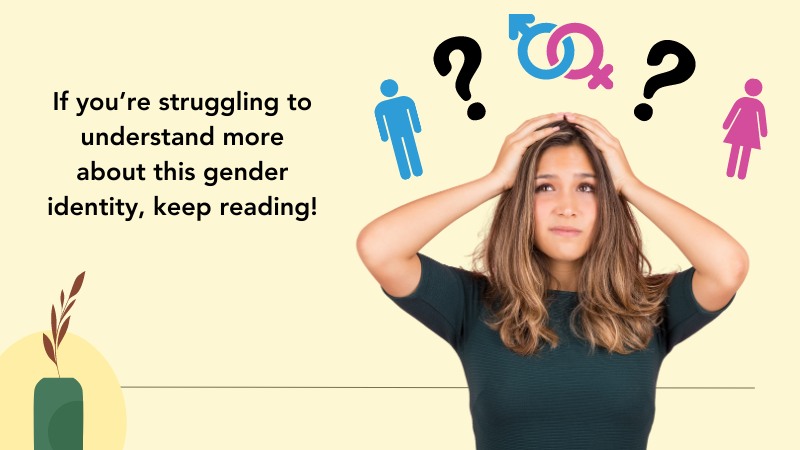
This article will explore this concept.
We’ll see how cross-dressing helps individuals figure out their gender identity and expression.
I will also point out some of society’s responses to that and give tips to deal with them.
If you’re struggling to understand more about this gender identity, keep reading!
You learn more about it and how cross-dressing can help you. At the end of this journey, you’ll know more about yourself.
What is Cross-Dressing?
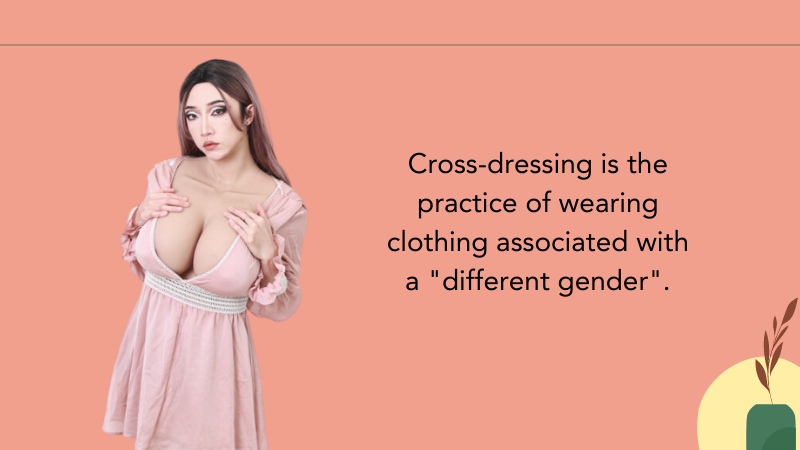
Cross-dressing is the practice of wearing clothing associated with a “different gender”.
But it can also refer to a wide range of clothing styles and expressions. These may fall outside of traditional gender norms.
Cross-dressing can be a form of self-expression and exploration of your identity.
It’s also a way to challenge traditional gender roles and norms. For some people, cross-dressing is a way to feel more comfortable and authentic.
To better embody their gender expression. For others, it can be a way to experience a different gender identity temporarily.
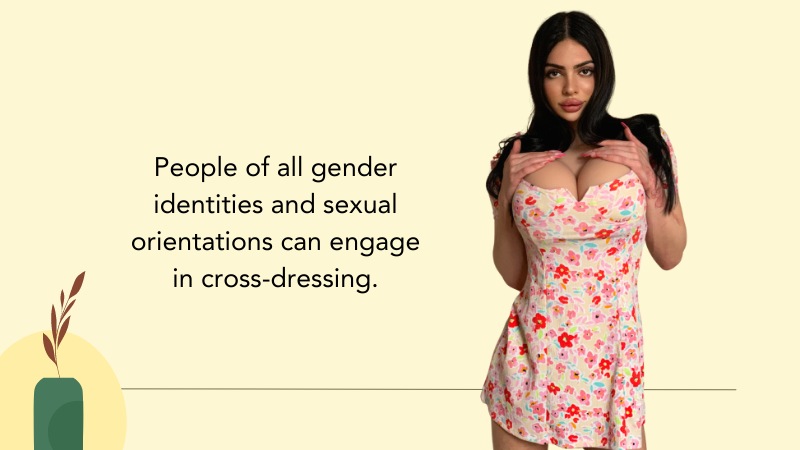
The practice of cross-dressing has been around for centuries. It’s present in many different cultures around the world.
It is often associated with sexual orientation, but cross-dressing is not linked to it.
People of all gender identities and sexual orientations can engage in cross-dressing.
It’s a form of self-expression or exploration. It’s not limited to clothing, either.
Many cross-dressers wear stuff like makeup and wigs. They try to better mimic the opposite gender.
Gender Fluidity and Cross-Dressing
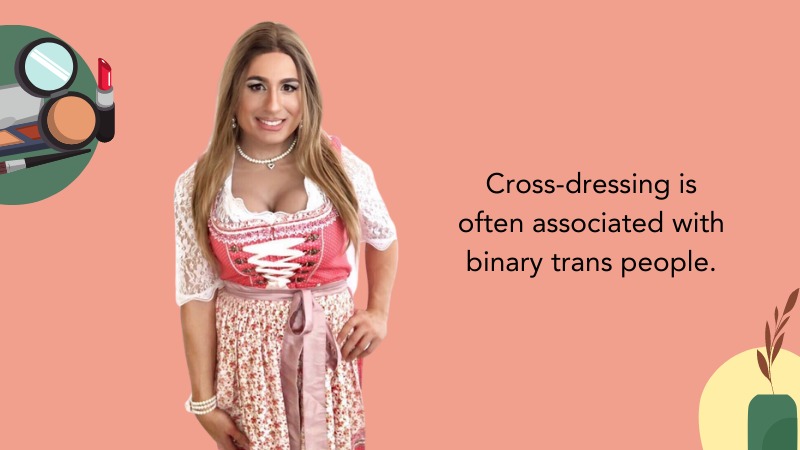
Cross-dressing is often associated with binary trans people. That’s because of the notion of two different genders that are opposite.
But non-binary people can cross-dress as well. They already challenge traditional gender norms and expectations.
As such, they can create a more fluid and flexible sense of self. It allows them to embrace a wider range of gender expressions.
Those may not have ties to their physical appearance or assigned gender at birth. Let me elaborate by defining a few concepts:
Gender Identity and Expression
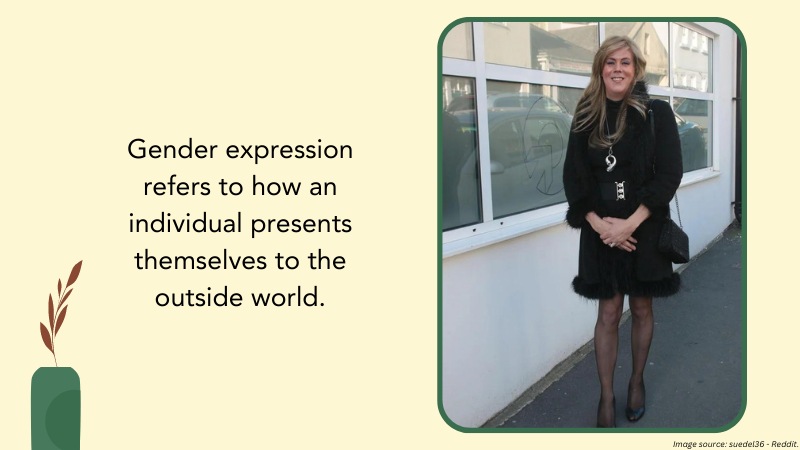
Gender identity refers to an individual’s internal sense of gender.
It is the gender that they identify as, which may be male, female, both, or neither.
Gender identity is a personal and subjective experience. It may not always align with the sex assigned at birth.
Gender expression refers to how an individual presents themselves to the outside world.
It includes their clothing, hairstyle, behavior, and other forms of self-expression.
Gender expression can be masculine, feminine, androgynous, or a combination of these.
It can also vary depending on the situation, context, or personal preference.

While gender identity and gender expression are related, they are not the same thing.
Gender identity is about who you are, while gender expression is about how you show that to the world.
An individual can have a gender identity that differs from their assigned sex at birth.
They can also express their gender in a way that is different from traditional gender norms.
This can lead to challenges in social situations. These include discrimination or marginalization.
But it also allows for greater freedom and expression of individuality.
Defining Gender Fluidity
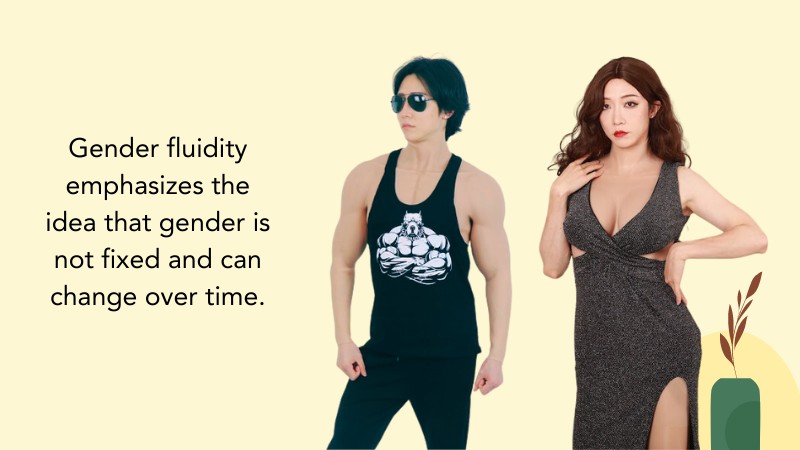
Gender fluidity is a non-binary gender identity. They don’t conform to the traditional binary notion of male or female.
Those who identify as gender-fluid experience a fluidity in their gender identity.
It means they may experience different gender expressions and identities over time.
One of the main features of gender fluidity is the constant change in one’s gender expression.
Gender-fluid people may not always conform to typical expectations of gender expression.
They may present themselves with a combination of masculine and feminine traits.
Gender fluidity emphasizes the idea that gender is not fixed and can change over time.
It is important to note that gender fluidity is a personal experience and identity.
Individuals may experience it in different ways. Gender fluidity can be seen as a way of breaking down the binary notion of gender.
That’s our next topic.
Breaking Down the Binary

Gender fluidity challenges the notion of a strict gender binary system.
In these systems, individuals are either male or female based on their biological sex.
The concept of gender fluidity recognizes that gender is not a fixed or static identity. Rather, it’s a complex and dynamic interplay of various factors.
These include biological sex, social norms, cultural expectations, and personal identity.
Gender fluidity can be empowering for people who don’t fit within traditional categories.
These are non-binary individuals and those who identify as both male and female.
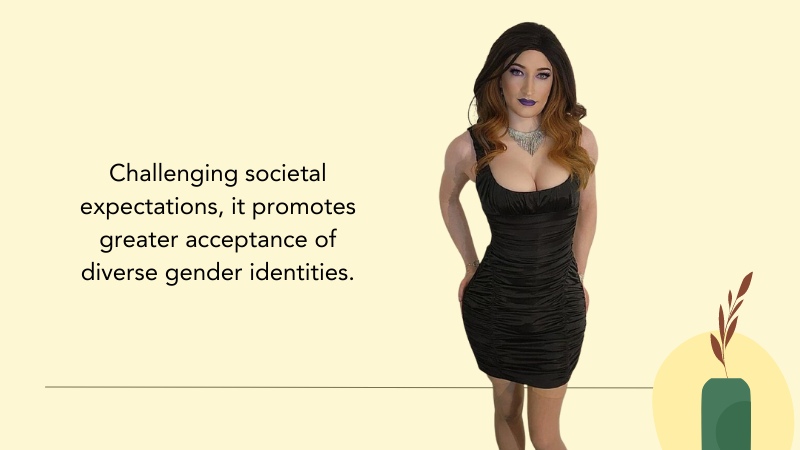
Furthermore, gender fluidity challenges the idea of gender as an immutable characteristic.
Instead, it acknowledges that it is a fluid and evolving aspect of our identities.
It provides a powerful framework for individuals to explore and express their identities.
Challenging societal expectations, it promotes greater acceptance of diverse gender identities.
How Cross-Dressing Can Help Explore and Express Gender Identity
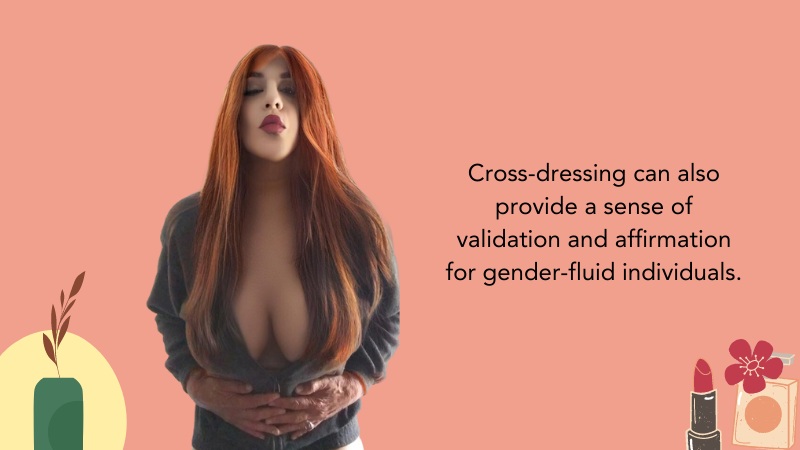
For gender-fluid individuals, cross-dressing can be an important tool.
By wearing stuff from a “different gender”, they can experiment with different presentations.
It allows them to explore the fluidity of their gender identity.
Cross-dressing can also provide a sense of validation and affirmation for gender-fluid individuals.
By presenting in a way that feels authentic, they can feel a sense of relief and empowerment.
It also helps them feel more connected to their community, reducing isolation.
We can defy the binary and present ourselves in a way that blurs traditional gender lines.
It can expand our understanding of gender as a spectrum rather than a binary.
This awareness, on the other hand, changes the way society perceives us.
Society’s Response
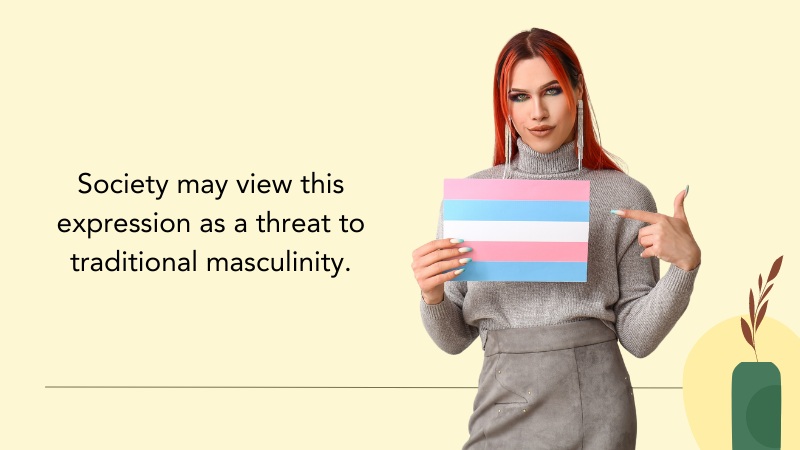
Despite the potential benefits of cross-dressing for gender-fluid individuals, there’s a downside.
It is unfortunately not always well-received by society.
There are strict gender norms and expectations imposed upon individuals. These make life difficult for those who do not conform to these norms.
Society sees cross-dressing as a direct challenge to traditional gender roles and expectations. This perception can lead to negative reactions and discrimination.
For example, take a person who was assigned male at birth.
This person may identify as gender fluid. They may choose to express themselves through feminine clothing and accessories.
This can lead to social stigma and discrimination. Society may view this expression as a threat to traditional masculinity.
This causes these individuals to face challenges in their personal and professional lives. These barriers include discrimination in the workplace and social exclusion.
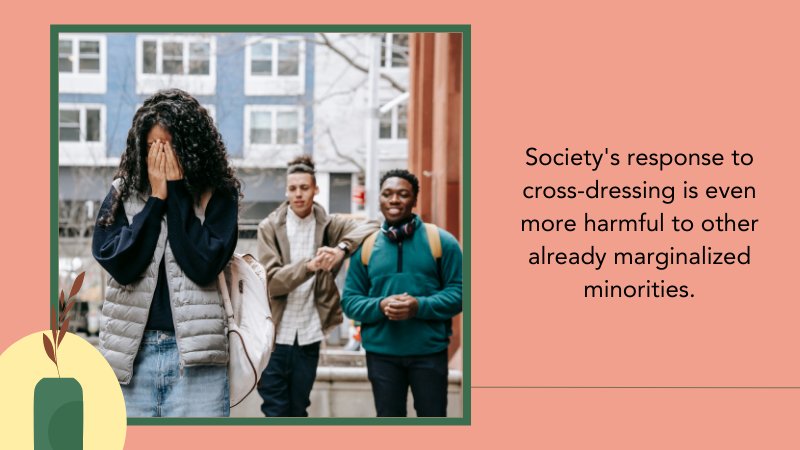
Society’s response to cross-dressing is even more harmful to other already marginalized minorities.
Some are people of color, members of the LGBTQ+ community, or those with disabilities. These individuals may face additional barriers to acceptance and understanding.
That’s due to intersecting forms of discrimination.
Despite these challenges, movements are promoting greater acceptance of gender fluidity.
Many individuals and organizations are working to break down traditional gender norms. It increases inclusivity and diversity.
Society needs to recognize and respect all individuals. That is, regardless of their gender expression.
Tips for Gender-fluid Cross-Dressers

Because of all these challenges, gender-fluid individuals may feel discouraged and overwhelmed.
However, it’s important to remember that there is always a way to overcome these barriers.
The first step is to build confidence and self-acceptance.
This can be achieved by surrounding oneself with supportive friends and family members.
Seeking out therapy or counseling is also important. It allows You to work through any internalized shame or negative self-talk.
Use it to practice self-care and self-love.
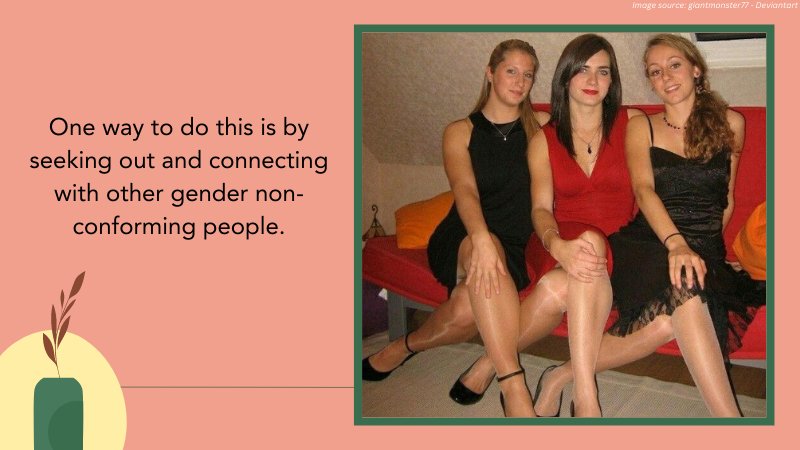
Once You build enough self-acceptance and confidence, You can begin to work on the next step.
It’s about overcoming the social stigma and judgment that comes with our identities.
One way to do this is by seeking out and connecting with other gender non-conforming people. That can be either online or in person.
This provides a sense of belonging and validation. It’s also an opportunity for activism and advocacy.
Additionally, it can be helpful to educate others about gender fluidity and cross-dressing.
Try it either through personal conversations or other means. Some good methods are social media and public speaking.
Try sharing personal experiences and educating others. This may break down societal barriers and create a more inclusive world for all genders.
With these tips in mind, remember that it’s okay to take things at your own pace.
Try to prioritize your own mental health and well-being. Exploring gender identity and expression can be a difficult and emotional journey.
But with support and self-care, it can also be a beautiful and empowering one.
Summary
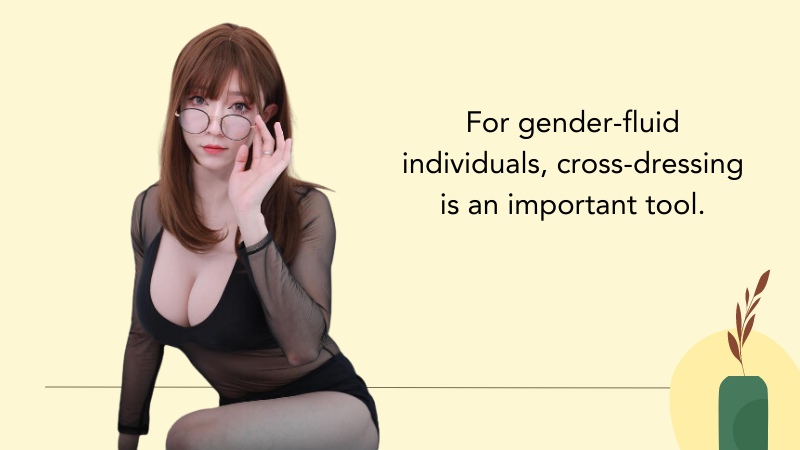
As society evolves, our understanding of gender identity expands.
As such, cross-dressing is gaining acceptance. It is a way to explore and celebrate gender fluidity.
It helps us challenge the notion of a strict gender binary system, and also promotes greater diversity.
For gender-fluid individuals, cross-dressing is an important tool. It allows them to explore and express their identity.
Now that you know more about it, what is your gender identity? Leave us a comment, and tell us about how cross-dressing helped you figure it out!
Tagged With:crossdressing , Crossdressing Psychology
- How Crossdressing Helps Me Discover Different Sides of Myself
- The Freedom of Age: Why Mature Crossdressers Shine Brighter
- Why Do So Many Crossdressers Enjoy Being Treated Like a Cumslut?
- Accepting Identity: The Black Femboy Culture Rise and Its Impact on Today’s Society
- How to Find Crossdressers and Connect with Like-Minded People
- Why Do Some Straight Men Enjoy Crossdressing?
Established in 2009, We are a recognized manufacturer and seller of professional crossdressing products.
It is our aim to become not just the most creative manufacturer but also a very considerate seller, as we provide the best quality products for crossdressers all around the world.

















 Breast Forms
Breast Forms  Body Suit
Body Suit  Realistic Mask
Realistic Mask  Femini Girdle
Femini Girdle Hip & Butt Enhancement (8)
Hip & Butt Enhancement (8) Penis Prosthesis
Penis Prosthesis Fake Muscle
Fake Muscle Bikini
Bikini  Wig
Wig  Corsets
Corsets Course
Course service@roanyer.com
service@roanyer.com +8618652200711
+8618652200711 Facebook
Facebook YouTube
YouTube Twitter
Twitter Instagram
Instagram




